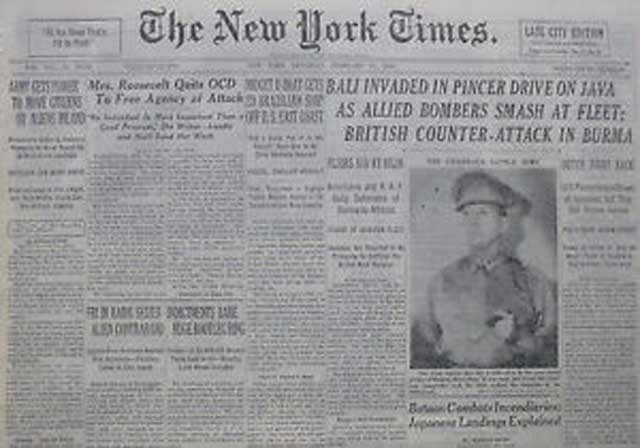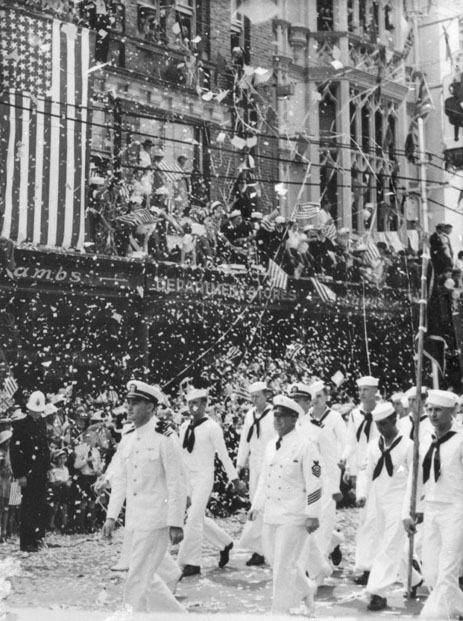Saturday 21 February 1942
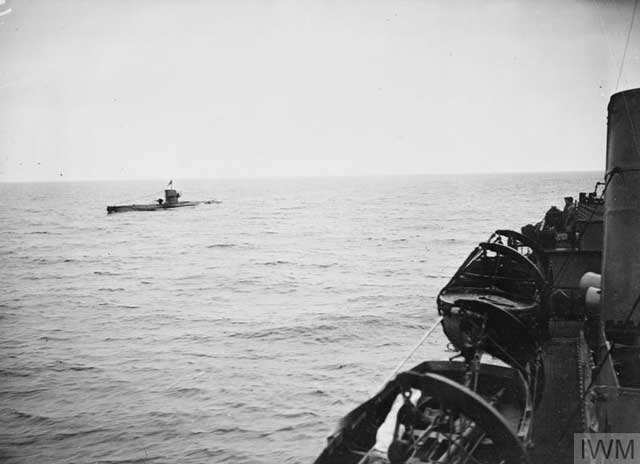 |
| HMS Graph during sea trials off the Clyde, 19-21 February 1942. The Graph was U-570 before being captured. © IWM (A 9817). |
Meanwhile, the 16th Indian Brigade and 46th Indian Infantry Brigade of the Indian 17th Division are stuck on a hot, dusty road in their retreat from the Bilin River. They are harassed by Japanese fighters strafing the road and setting vehicles alight and also short of essentials like water. The Japanese reach the division's headquarters at Kyaikto, which barely holds out while it prepared to evacuate. The retreating column loses its discipline, with some men abandoning the road and taking refuge in the nearby Bogyagi Rubber Estate. Many men form up into small units or proceed alone through the jungle, always in danger of being spotted by Japanese snipers or running into ambushes. The American Volunteer Group (AVG) "Flying Tigers" now operate out of Rangoon. The First Squadron successfully attacks Tak Aerodrome at Rahaeng, destroying a fighter and two bombers. In general, the AVG pilots can establish aerial superiority over critical areas when necessary. However, when they try to help out the retreating 17th Division today, the Flying Tigers mistakenly attack some of the men they are trying to help on the road, killing 160 of them and only adding to the horrific scene of blazing vehicles and dying men.
Java remains the Allies' bastion in the Netherlands East Indies, but it is basically surrounded now that the Japanese have taken the islands around it. The decision of Australia to divert its men to the homeland also is reducing Allied options. General Brett tells the War Department, which still feels that the Allies can hold Java, that he is evacuating the Fifth Air Force and other troops from Java back to Australia. Today, USAAF Fifth Air Force bombers based at Surabaya, Java, attack on Japanese shipping and on Japanese positions on Bali which are thought to be preparing an invasion of Java. ABDA Commander General Archibald Wavell also informs his superiors that Java will soon be lost.
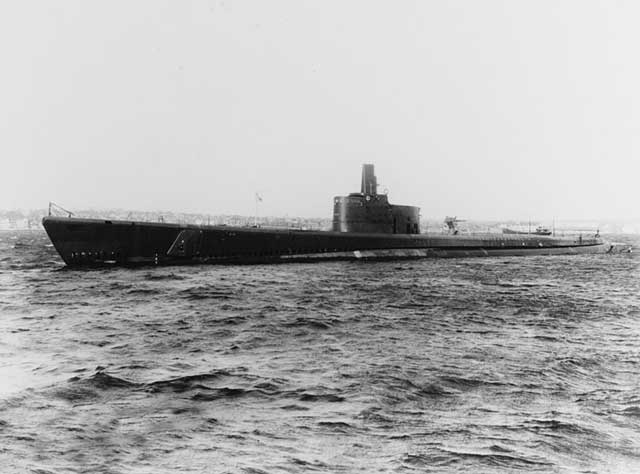 |
| USS Growler (SS-215) off Groton, Connecticut (USA), on 21 February 1942 (Naval History and Heritage Command). |
The Sook Ching Massacre continues in Singapore. The Japanese execute an unknown number of men of Chinese ethnicity in various locations.
US Navy submarine USS Triton (Lieutenant Commander Willis A. "Pilly" Lent, SS-201), on its second patrol out of Pearl Harbor in the East China Sea, intercepts two Japanese freighters. It hits Shokyu Maru with two torpedoes but is chased off by a four-engine seaplane. Shokyu Maru sinks about sixty miles south of Quelpart (Jeju) Island.
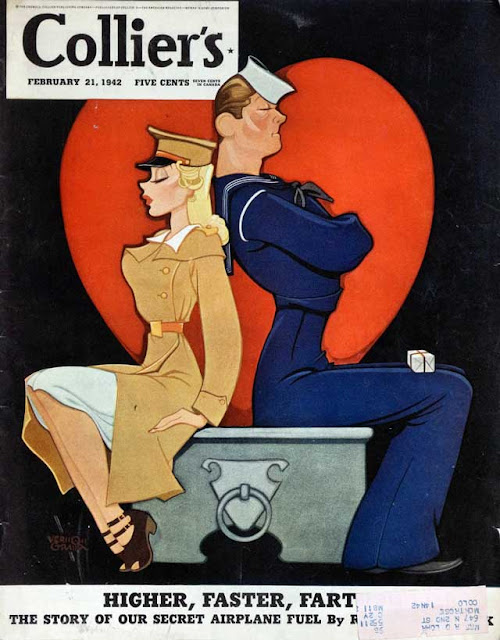 |
| Collier's, 21 February 1942. |
 |
| A Luftwaffe reconnaissance photo of Sevastopol, Crimea, taken on 21 February 1942. The arrow points to a Soviet Navy torpedo depot. The Red Army continues to hold Sevastopol, though it is surrounded on its landward approaches by General Manstein's 11th Army (Federal Archive Bild 168-278-017). |
European Air Operations: The British learn that heavy cruiser Prinz Eugen has moved to a fjord near Trondheim, so during the day they send 15 bombers (6 Halifax, 5 Manchester, and 4 Stirling bombers) to attack Norwegian airfields. This is to prepare for a Fleet Air Arm raid by the aircraft carrier HMS Victorious on Prinz Eugen. However, the weather is poor and little is accomplished. The British lose one Manchester.
After dark, RAF Bomber Command sends 22 Wellington and 20 Hampden bombers over Germany in search of targets of opportunity. The RAF loses two Hampdens and one Wellington.
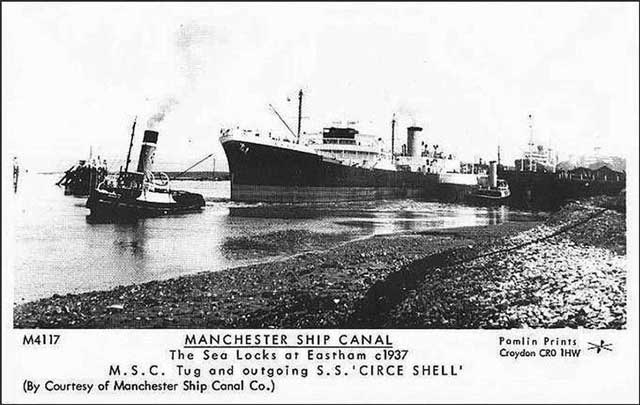 |
| Circe Shell, sunk on 21 February 1942. |
The Kriegsmarine continues Operation Neuland in the Caribbean to great effect on 21 February 1942. While not as famous as Operation Paukenschlag along the east coast of the United States, Operation Neuland is very successful and greatly complicates the situation facing the United States Navy.
 |
| Norwegian tanker Kongsgaard, sunk on 21 February 1942. |
U-161 (Kptlt. Albrecht Achilles), on its second patrol out of Lorient, torpedoes 8207-ton British tanker Circe Shell about 20 miles northwest of Port of Spain, Trinidad. The tanker takes a long time to sink, so U-161 waits until dark when it is safe from Allied aircraft and fires a final torpedo at 01:41 on the 22nd to finish it off. There is one dead and 57 survivors.
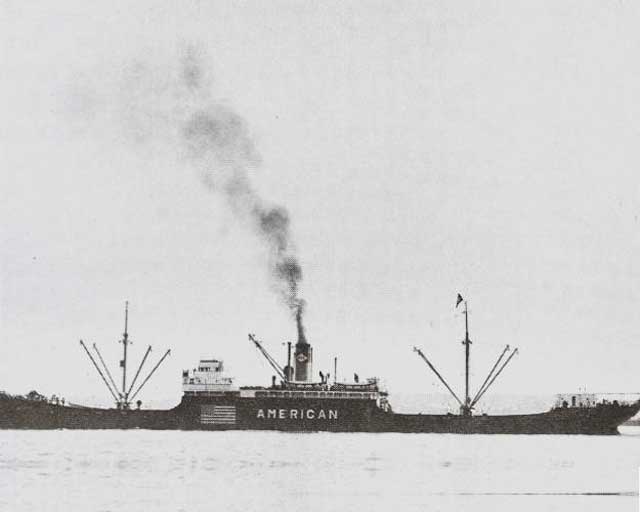 |
| Azalea City (shown) is lost with all hands on 21 February 1942. |
U-107 (Oblt. Harald Gelhaus), on its fifth patrol out of Lorient, torpedoes and damages 10,068-ton Norwegian tanker Egda in the mid-Atlantic south of Newfoundland. The tanker has been dispersed from Convoy ON-65. Two torpedoes hit, but they only cause a list to port that is corrected by counterflooding (tankers are notoriously difficult to sink due to their unique construction). Gelhaus runs out of torpedoes after firing one more that misses, so Egda is able to continue on to Halifax. There are no dead and 40 survivors.
U-156, which opened Operation Neuland by shelling an oil installation on Aruba, docks at Vichy French port Martinique in order to offload an injured man. This causes a diplomatic incident between the United States and Vichy France (see below).
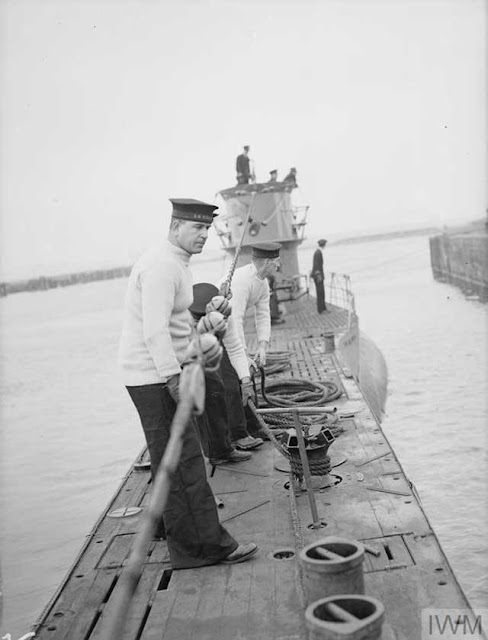 |
| HMS Graph, formerly U-570, undergoing trials in the Clyde on 19-21 February 1942. "The casing party heaving in on the capstan." © IWM (A 9881). |
US/Vichy France Relations: French Vice Premier Admiral Jean Darlan tells US Ambassador Admiral William D. Leahy USN (Retired), about the emergency visit by U-156 today to the Vichy French port of Martinique. Leahy warns Darlan (as he writes in his diary) that the United States is prepared to:
take such action in the interest of security of the Western Hemisphere as it may judge necessary and in accordance with existing inter-American obligations.Leahy is still waiting for a reply to his request to be recalled from France, where he feels very unwanted. The United States has no plans to occupy Martinique at this time, so Leahy is bluffing when he suggests that the United States is ready to act. However, the French Navy has large ships there, including the one-off aircraft carrier Bearn, so it is keeping a close eye on the port.
 |
| The New Yorker, 21 February 1942. |
In these horrible times of savagery and brute force, the people of China and their brethren the people of India should, for the sake of civilization and human freedom, give their united support to the principles embodied in the Atlantic Charter and in the joint declaration of the 26 nations, and ally themselves with the anti-aggression front. I hope the Indian people will wholeheartedly join the allies-namely, China, Great Britain, America, and the Soviet Union-and participate shoulder to shoulder in the struggle for survival of a free world until complete victory has been achieved and the duties incumbent upon them in these troubled times have been fully discharged.After this speech, the couple returns to China.
US Military: With President Roosevelt's Executive Order 9066 in effect, Secretary of War Henry Stimson reassures Congress in a letter that the US Army is preparing to remove people of Japanese descent from the west coast of the United States. There is great concern among members of the west coast delegation that this is not being done quickly enough. Stimson has his subordinates begin drafting legislation to enforce FDR's order (it becomes Public Law 503 after being passed by Congress on 19 March and signed by the President on 21 March 1942).
 |
| Flynn's Detective Fiction, 21 February 1942. |
British Military: The British remove Burma from the ABDA Command and it reverts to a purely British Empire war zone. The British 7th Armored Brigade arrives in Rangoon Harbor from the Middle East.
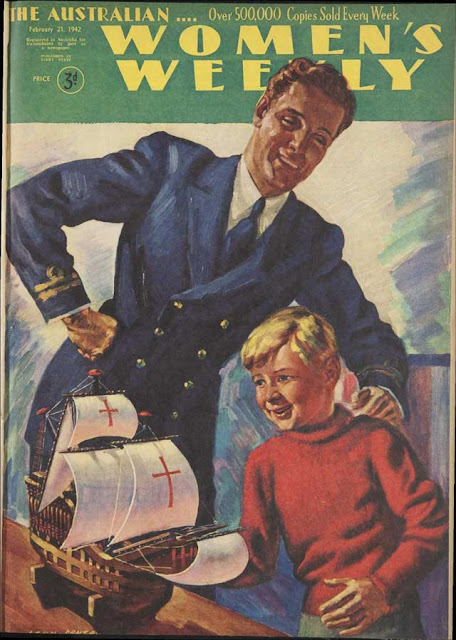 |
| Australian Women's Weekly, 21 February 1942. |
Uruguay: President Alfredo Baldomir dissolves congress and assumes dictatorial powers.
India: A non-party conference opens in Delhi under the auspices of Tej Bahadur Sapru. The goal is to claim Dominion status through dialogue rather than through resistance, as advocated by some other Indian leaders.
 |
| Episode 2 of "This is War," broadcast on 21 February 1942. |
Future History: Margarethe von Trotta is born in Berlin. She becomes an actress, with her first contribution behind the scenes to Volker Schlöndorff’s "The Sudden Wealth of the Poor People of Kombach" (1971). The two become a film team and get married, with Volker passing away in 1991. She becomes known as a "feminist filmmaker" who creates documentaries often centered around female historical figures such as Rosa Luxemburg and Hannah Arendt or fictional heroines. Usually, her heroines champion women's rights and seek to upset the status quo. Margarethe von Trotta remains active in the German film industry as of 2019.
 |
| The Saturday Evening Post of 21 February 1942, with a cover design by Rudy Arnold. |
February 1942
February 1, 1942: The US Navy Strikes Back
February 2, 1942: Germans Recovering in Russia
February 3, 1942: Japanese Shell and Bomb Singapore
February 4, 1942: Battle of Makassar Strait
February 5, 1942: Empress of Asia Sunk
February 6, 1942: The Christmas Island Body
February 7, 1942: The Double-V Campaign
February 8, 1942: Japan Invades Singapore
February 9, 1942: French Liner Normandie Capsizes
February 10, 1942: US Car Production Ends
February 11, 1942: Tomforce Fails on Singapore
February 12, 1942: The Channel Dash
February 13, 1942: Japanese Paratroopers In Action
February 14, 1942: RAF Orders Terror Raids
February 15, 1942: Japan Takes Singapore
February 17, 1942: Indian Troops Defect to Japanese
February 18, 1942: Battle of Badung Strait
February 19, 1942: FDR Authorizes Internment Camps
February 20, 1942: O'Hare the Hero
February 21, 1942: Crisis in Burma
February 22, 1942: Bomber Harris Takes Over
February 23, 1942: Bombardment of Ellwood, California
February 24, 1942: US Raid on Wake Island
February 25, 1942: Battle of Los Angeles
February 26, 1942: Gneisenau Eliminated
February 27, 1942: Battle of Java Sea
February 28, 1942: Battle of Sunda Strait
2020
